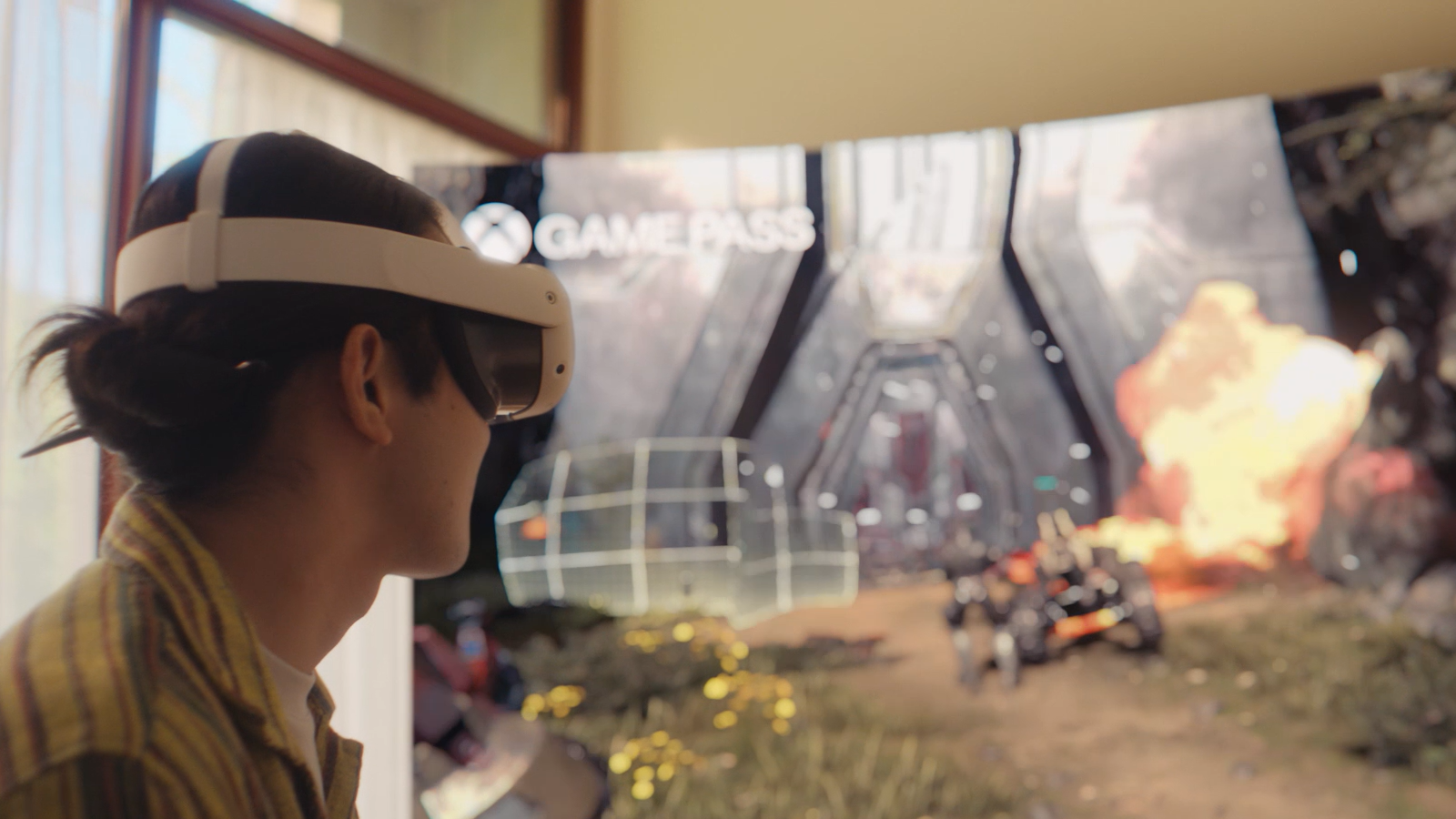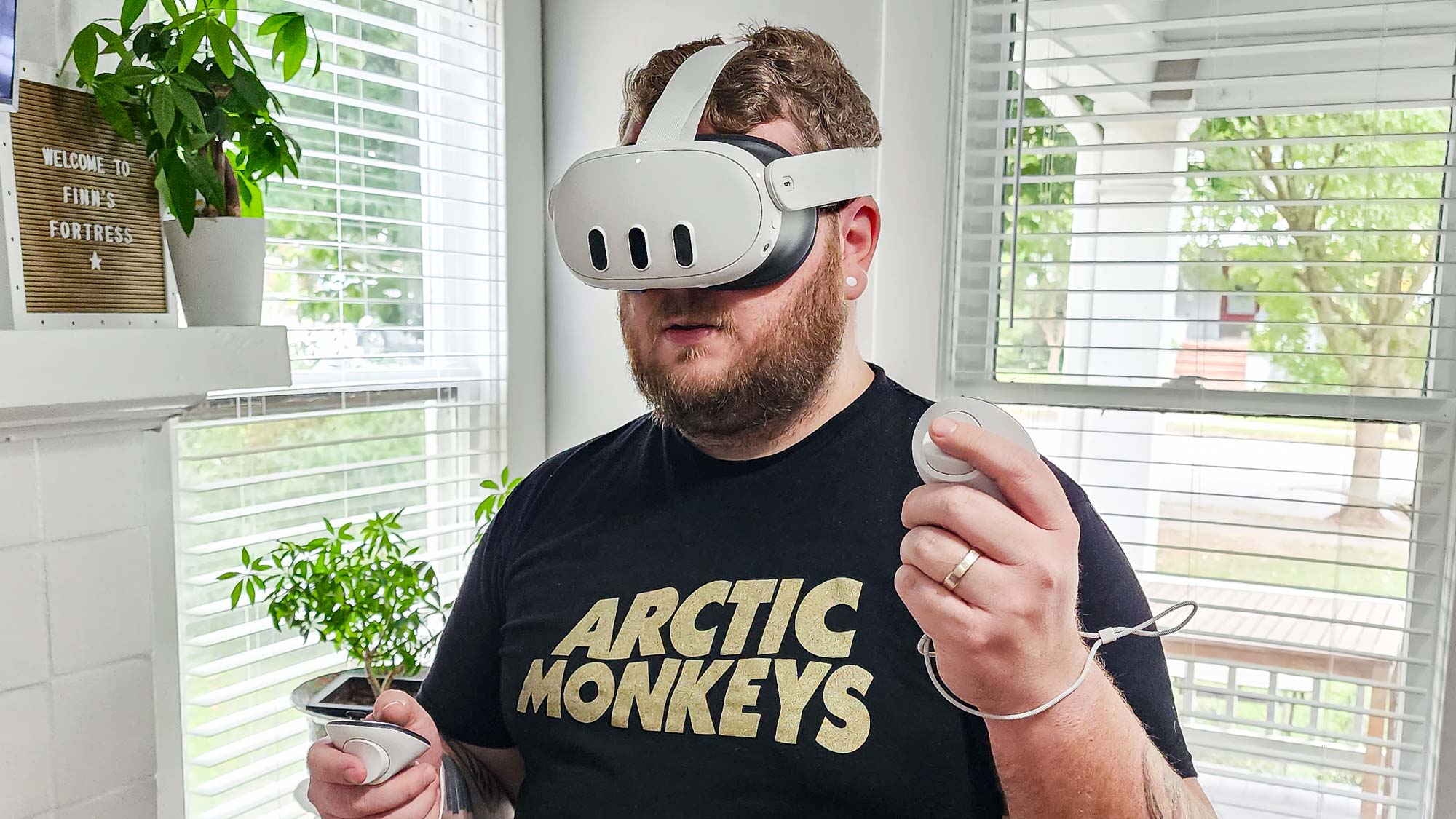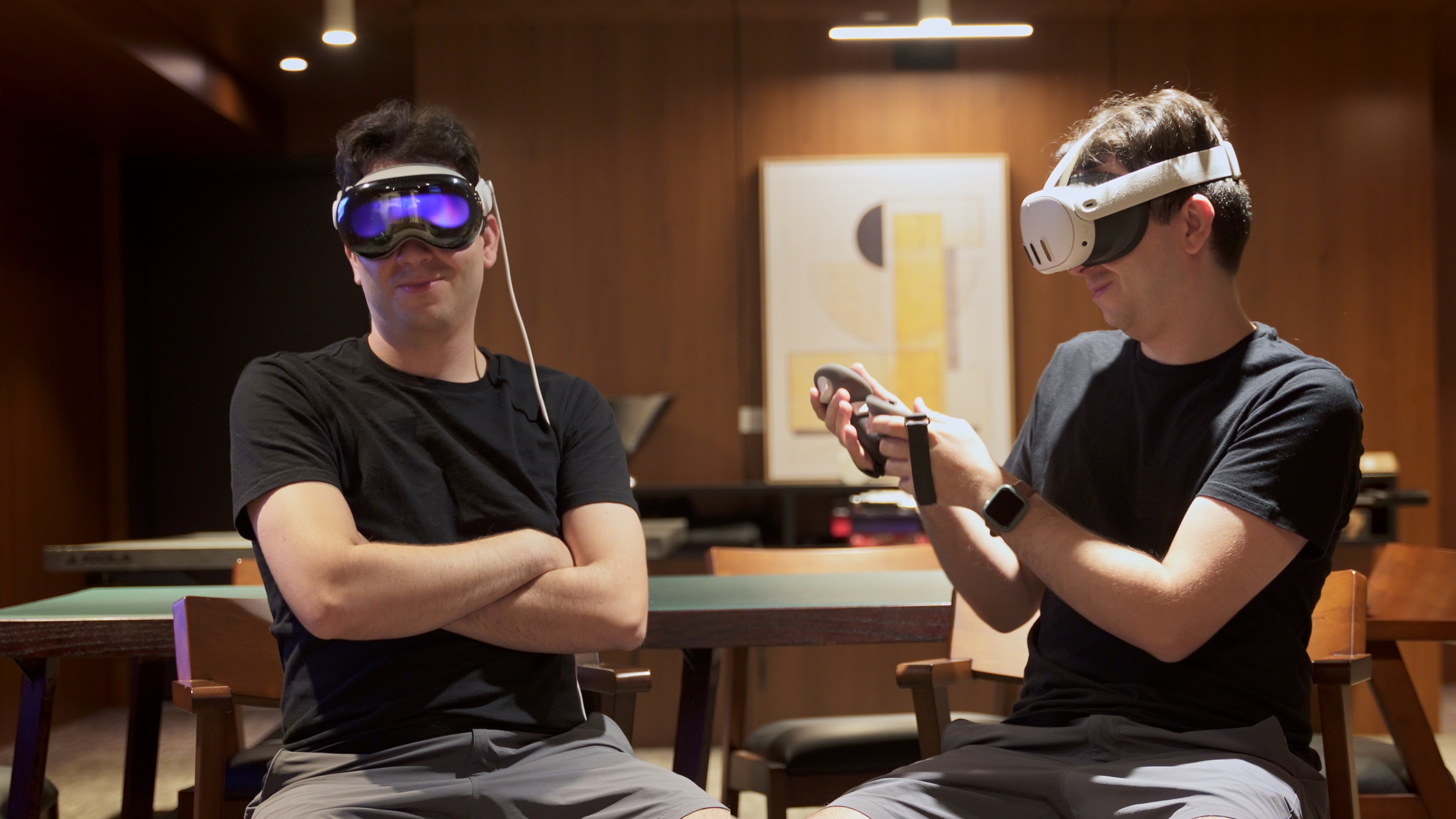Meta Quest 3 should’ve killed big-screen TVs — here’s why that didn’t happen
Cost, comfort and shareability are keeping headsets at bay

When I reviewed the HTC Vive back in 2016, I thought VR headsets were about to set the world on fire. For roughly two months, the Vive was the best VR headset and I spent as much time as I could living in VR and demoing it for everyone who came over.
One of the biggest features that I thought would take off was Viveport Video, a collection of 360-degree videos that offered a more immersive experience than standard 16x9 format content.
Everyone wants to watch something on an infinitely big TV, right? Turns out, no. Not at all. And now I've finally got a few answers why.
VR headsets have low adoption

Now if you own a VR headset like the Meta Quest 3, you might actually use it for watching the best streaming services. However, sadly you're in the minority.
According to a recent report by research firm Counterpoint, the sale of VR headsets dropped 12% year-over-year in 2024. And that was the third year in a row that sales have declined. Everyone has different numbers about the total number of units sold, but by the looks of things, it was only around 5 million units.
By comparison, in 2024 the worldwide global sales of TVs reached 230 million units. And that number doesn't fluctuate by a ton each year. In 2020, 2021 and 2023, there were more than 200 million units sold worldwide.
So why are TVs selling so much better than VR headsets? One very good reason is because TVs are becoming more affordable while VR headsets cost just as much as they did almost a decade ago.
Get instant access to breaking news, the hottest reviews, great deals and helpful tips.
When you can buy one of the best TVs for under $500, you're probably not in a rush to go out and spend $500 on a stand-alone VR headset that you've never tried before. Maybe you'd jump on the opportunity to try VR if there was a good headset available for less than $100, but at that price you're going to have to buy one secondhand.
In short, one reason that VR headsets haven't overtaken TVs is because of low sales and stagnant prices. There just aren’t enough headsets out there and evangelists preaching the benefits about watching movies and shows in VR
VR makes people feel queasy
As it turns out, good headsets are hard to make. Or, well, at least harder to make than a good TV.
Very early on in the advent of VR, it was decided that a 90Hz refresh rate is the minimum you'd want on a screen that close to your face. Any slower, and you're more likely to feel motion sick. Ideally, you'd want more than a 90Hz refresh rate, but then that will come at the cost of lower resolution.
Now, I should mention that the Quest 3 defaults to a 90Hz refresh rate, but that can be changed to 120Hz in the settings. However, not every application and game takes advantage of the faster refresh rate. What that means is that some apps are going to cause less nausea than others.
I've never watched a TV that's so bad that it's made me sick to my stomach.
But let's be honest, any time spent feeling nauseous is bad. There's really no point when watching a TV would make you feel motion sick. The soap opera effect is unpleasant, sure, and bad motion interpolation can induce headaches. But I've never watched a TV that's so bad that it's made me sick to my stomach.
Sadly, the same can't be said for VR.
It's hard (but not impossible) to share your screen in VR

When watching videos alone, I'd argue that VR is as good as a cheap TV. Now, admittedly, because I review them professionally I'm always going to enjoy the better contrast of a QD-OLED screen than the LCD of a Quest 3, but good luck finding a Samsung S95F for $500.
But when it comes to sharing content with someone else in the same room as you, TVs can't be beat. Sure, you can Cast some of what you're doing in VR to a TV to share with someone (and one of my favorite VR games, Keep Talking and Nobody Explodes, uses that to its advantage). But it's hard to share videos without introducing latency issues.
For that reason, if you're in the same room, it just makes more sense to share a screen rather than Casting something so one person can watch in VR while another watches on a screen.
That said, if you have a friend who lives far away, VR can be a nice meeting place to come together and watch a movie. Apps like Bigscreen make that possible, though... again, it doesn't feel like enough people know about it and quality isn't always perfect.
Will VR ever replace the TV experience?

Look, as much as I enjoy watching and reviewing them, TVs aren't perfect. Setting them up is a huge pain, and like phones and tablets, the displays themselves don't always survive for more than five or six years.
I'm not rooting for the death of TVs, mind you, but a change in form factor wouldn't hurt. LG's Transparent TV is a great example of what I'd like: It's a screen that fades into the background when you're not using it.
AR stands a real chance at taking down TVs... but I don't know anyone willing to shell out $3,500 for the Apple Vision Pro.
In its current form — at its current price point — VR isn't going to overtake TVs. There's still too many kinks. Now, AR stands a real chance at taking down TVs... but I don't know anyone willing to shell out $3,500 for the Apple Vision Pro.
Until VR becomes more user-friendly or shoots down in price, TVs will continue to be the de facto screen on which we all watch shows and movies in 2025.
More from Tom's Guide
- Samsung OLED TVs are set to get even thinner — here’s how
- Apple TVs just got a big Dolby Atmos boost thanks to tvOS 18.5
- Forget OLED TVs — this ultra short throw projector can hit 4,000 lumens at 120 inches

Nick Pino heads up the TV and AV verticals at Tom's Guide and covers everything from OLED TVs to the latest wireless headphones. He was formerly the Senior Editor, TV and AV at TechRadar (Tom's Guide's sister site) and has previously written for GamesRadar, Official Xbox Magazine, PC Gamer and other outlets over the last decade. Not sure which TV you should buy? Drop him an email or tweet him on Twitter and he can help you out.
You must confirm your public display name before commenting
Please logout and then login again, you will then be prompted to enter your display name.
